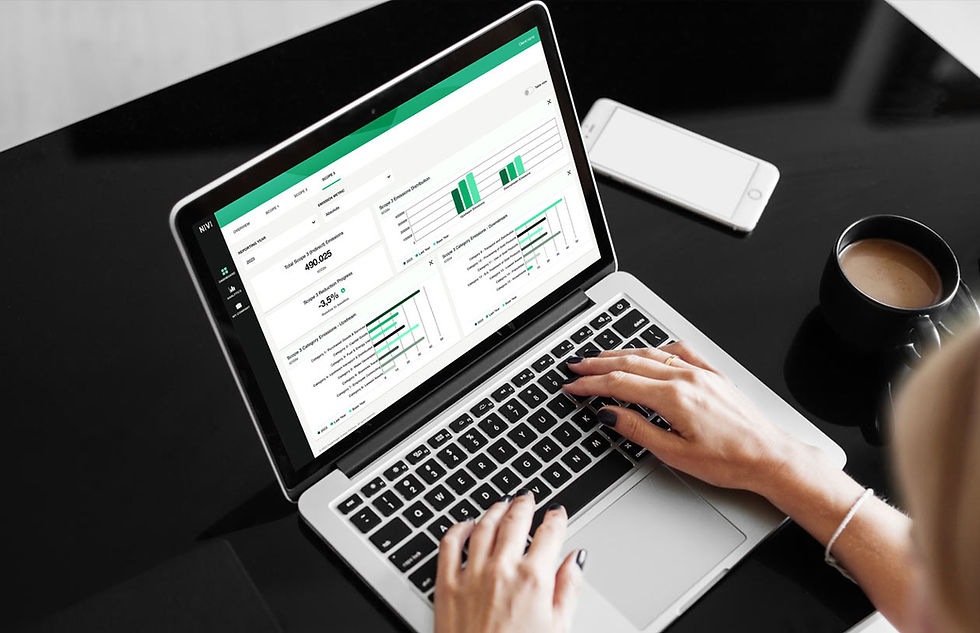Tailoring the Climate Report to Your Industry
- Rune Loftager

- 19. sep. 2024
- 2 min læsning
Opdateret: 4. jun.

At NIVI, we're dedicated to helping companies measure and understand their climate footprint. We know that every business is unique, and the areas you need to focus on can vary widely depending on your industry. Here's a straightforward guide on how different types of businesses can identify their most relevant climate impact areas and start working on reducing the carbon footprint related to the business.
Why Your Business Type Matters
When you first start using NIVI, you will likely begin with general data. As you become more familiar with the process, you can gather more detailed information. The key is to start by creating an initial overview of your emissions. This helps identify the most relevant focus areas and might involve mapping out materials, key suppliers, products, etc., that can be further scrutinized.
While there is no one-size-fits-all approach to identifying relevant focus areas for all industries, we have outlined some of the most interesting Scope 3 activities for various industries below.
Crafts, Construction, and Engineering Companies
For crafts, construction, and engineering companies, the climate footprint is largely influenced by purchased materials and use, along with energy consumption. Here's what should be the focus:
 | Materials Wood, concrete, tiles, windows, doors, pipes, plumbing items Energy Electricity and fuel for vehicles and machinery Waste Handling hazardous waste Administrative Purchases Tools, vehicles, machinery, and other administrative products. |
Using supplier-specific emission factors or life cycle assessments (LCA) for materials and products will provide an accurate reflection of your emissions compared to average factors. However, most companies begin with average factors to gain an initial understanding of their emissions.
Service Companies (e.g., Consultants, Hairdressers)
Service companies often focus on their electricity usage, transportation, and purchased products and services. Key areas include:
 | Energy Lighting and equipment in offices or retail spaces Products IT equipment, office supplies, cleaning agents, hair products, and food Transportation Employee travel and commuting |
It would here be recommended to gather activity data from financial accounts and purchase invoices as well as aim for supplier-specific emission factors or LCAs for areas where increased accuracy is required.
Manufacturing Companies
Manufacturing companies should concentrate on emissions related to production. Important aspects are:
 | Materials Raw materials, semi-finished products, components Energy Electricity and fuel consumption during production Waste Amount and handling of production waste Product Use Emissions from the use of sold products by customers |
Transport and Logistics Companies
For transport and logistics companies, high energy consumption for transport is a major factor. Focus areas include:
 | Transport Means Purchase and maintenance of trucks, vans, etc. Fuel Combustion fuels for vehicles Energy Lighting and temperature control in storage facilities Administration Office operations, IT equipment, office supplies |
The Greenhouse Gas Protocol and Exclusions
According to the Greenhouse Gas Protocol, you don't need to account for every single emission as long as exclusions are justified. This underlines the focus on the most relevant activities and openly disclose any exclusions made in the report.
Climate Reporting with NIVI
No matter your industry, the first step is to calculate your emissions for all relevant activities within your company's scope. Use the insights provided here to identify where to start and how to get better.
By tailoring the focus areas of your climate report to your specific business needs, NIVI can help you measure, understand, and ultimately reduce your climate footprint.












